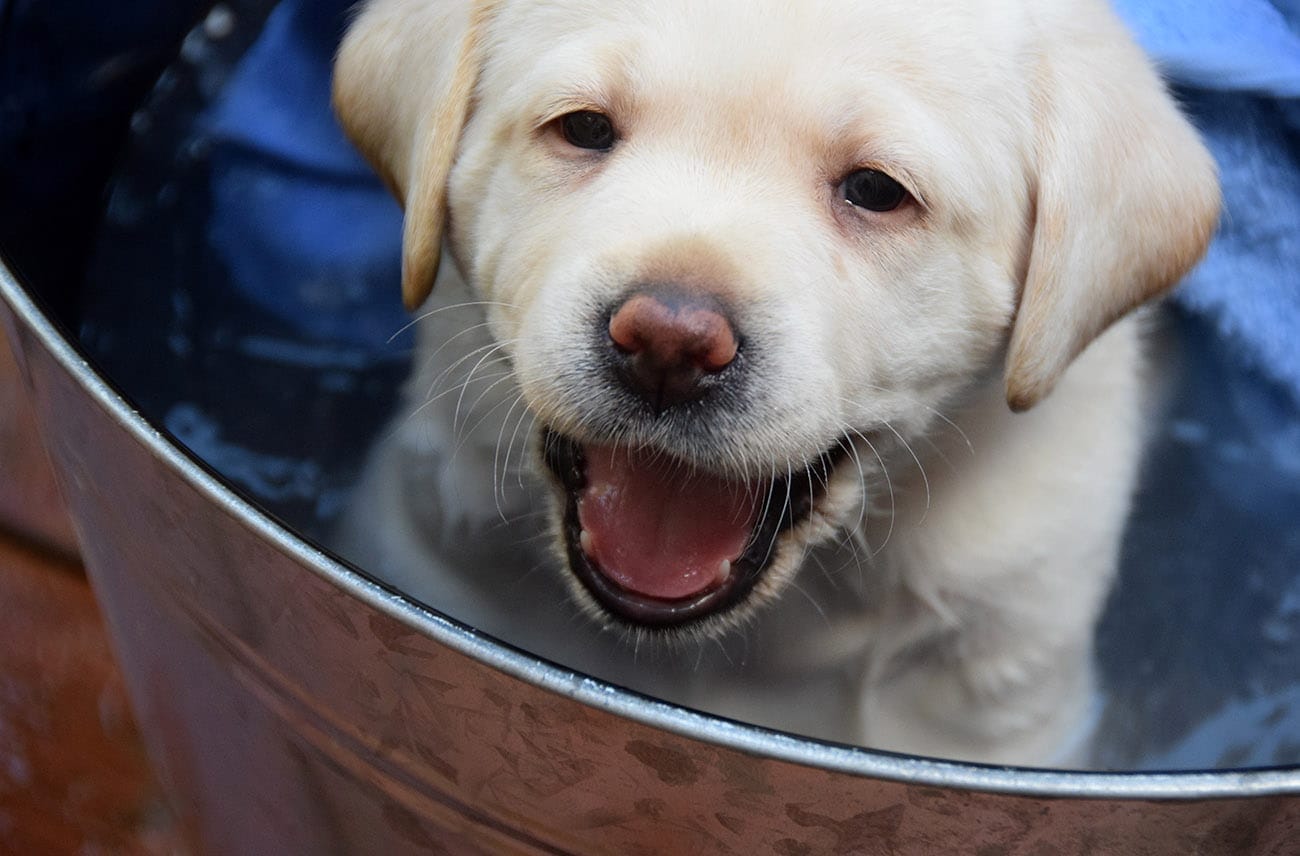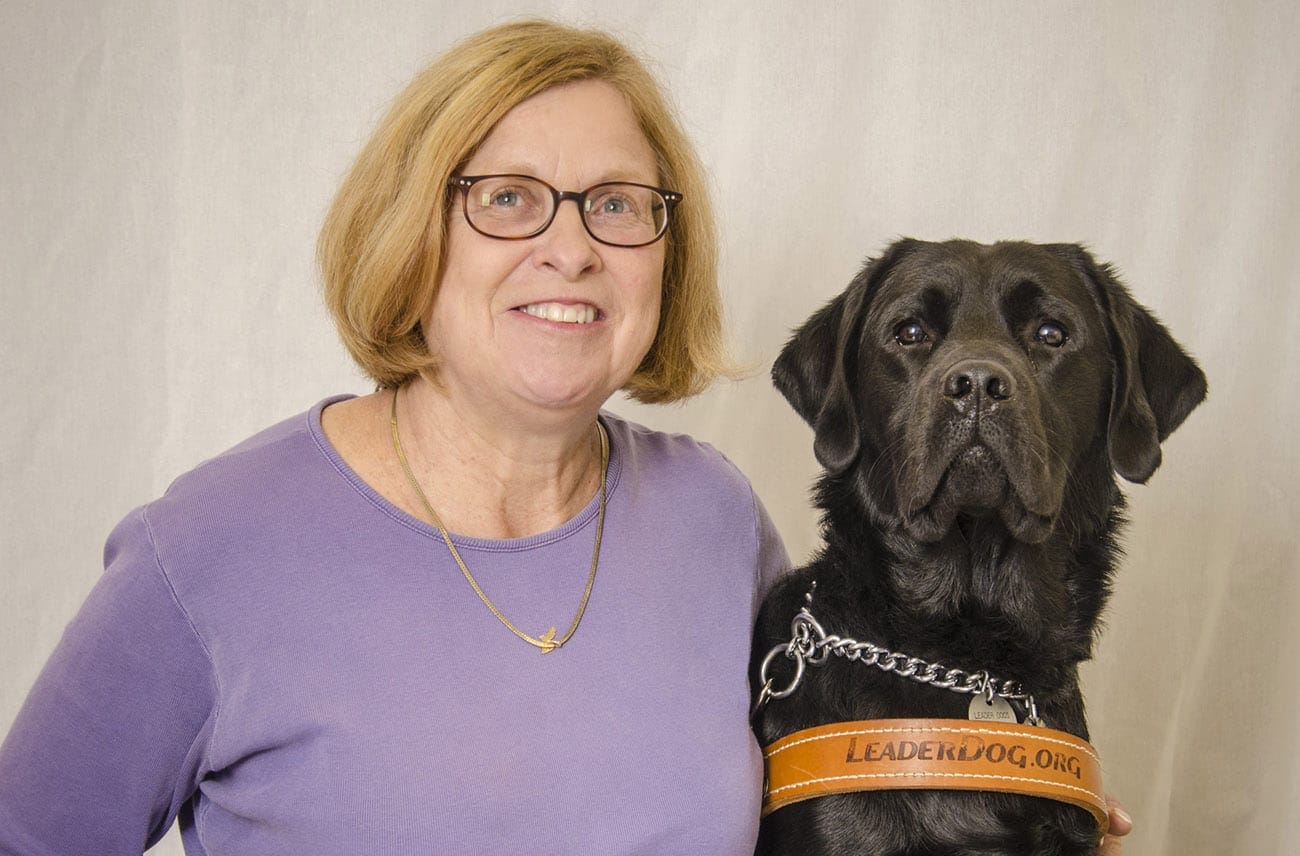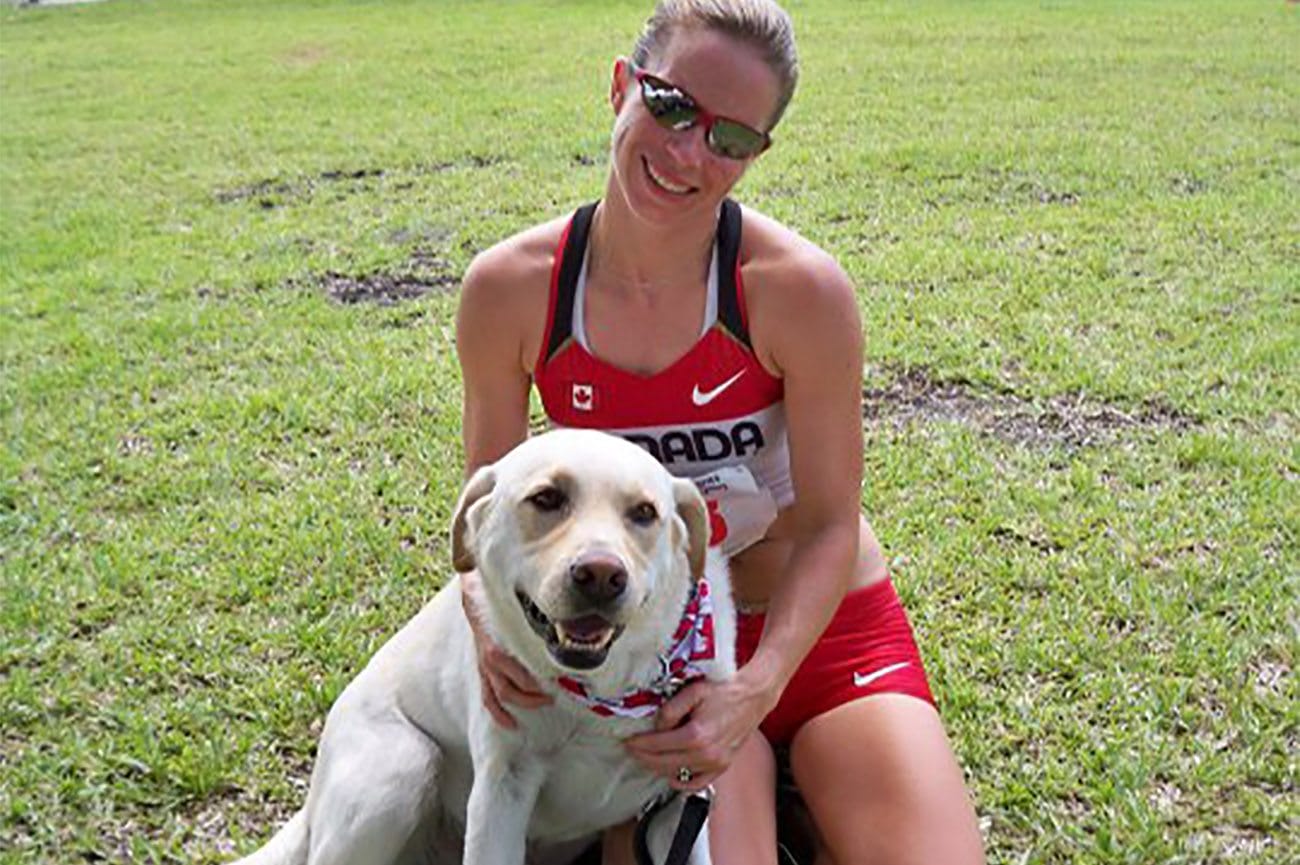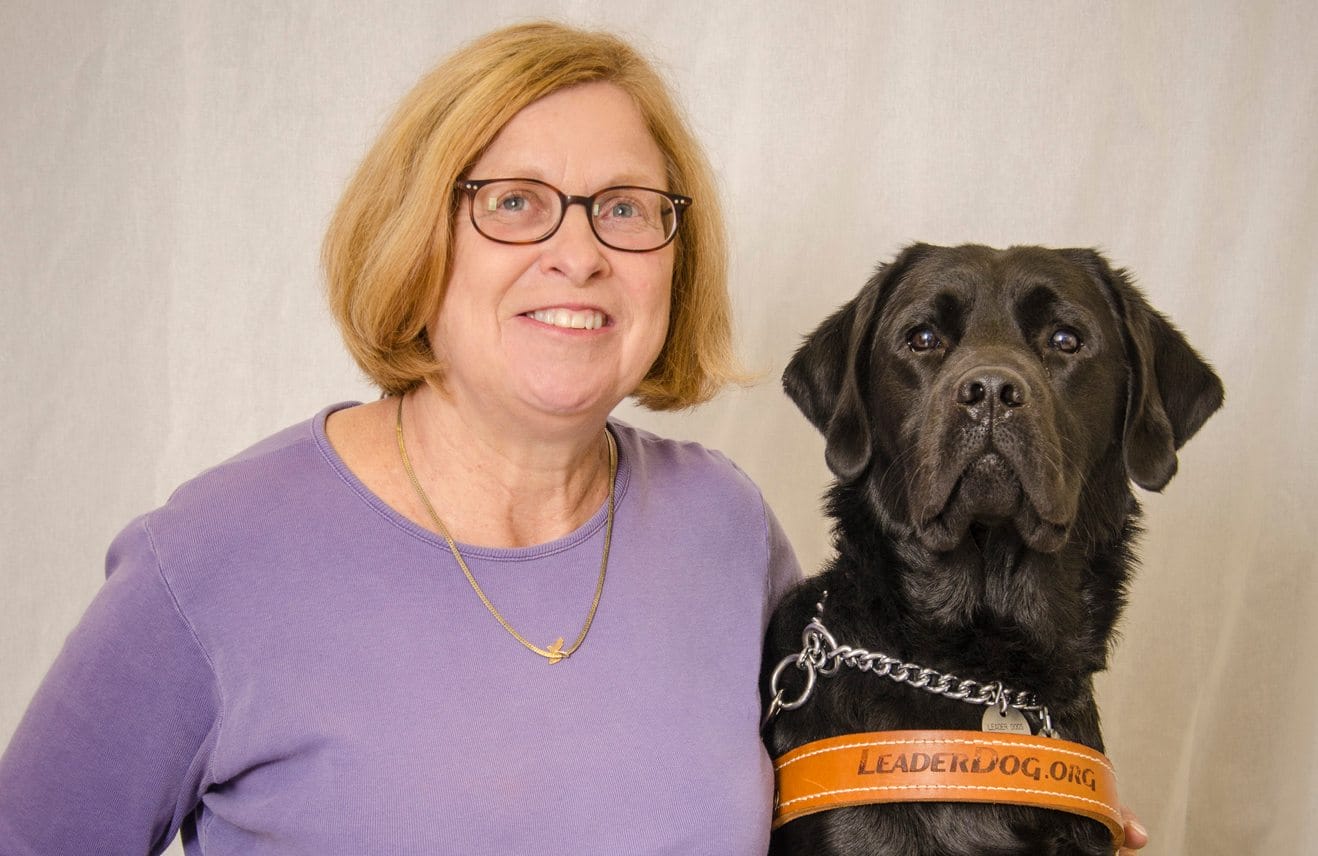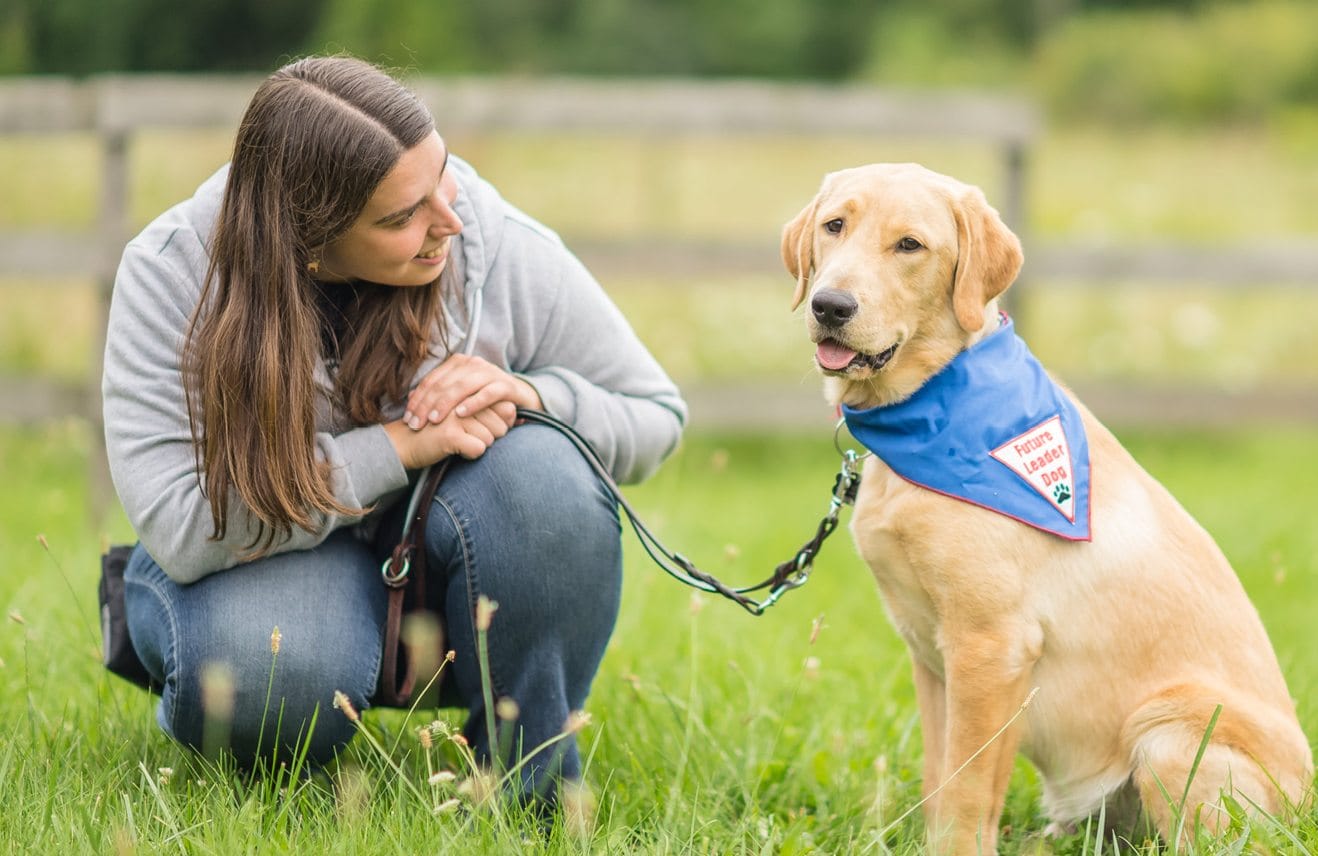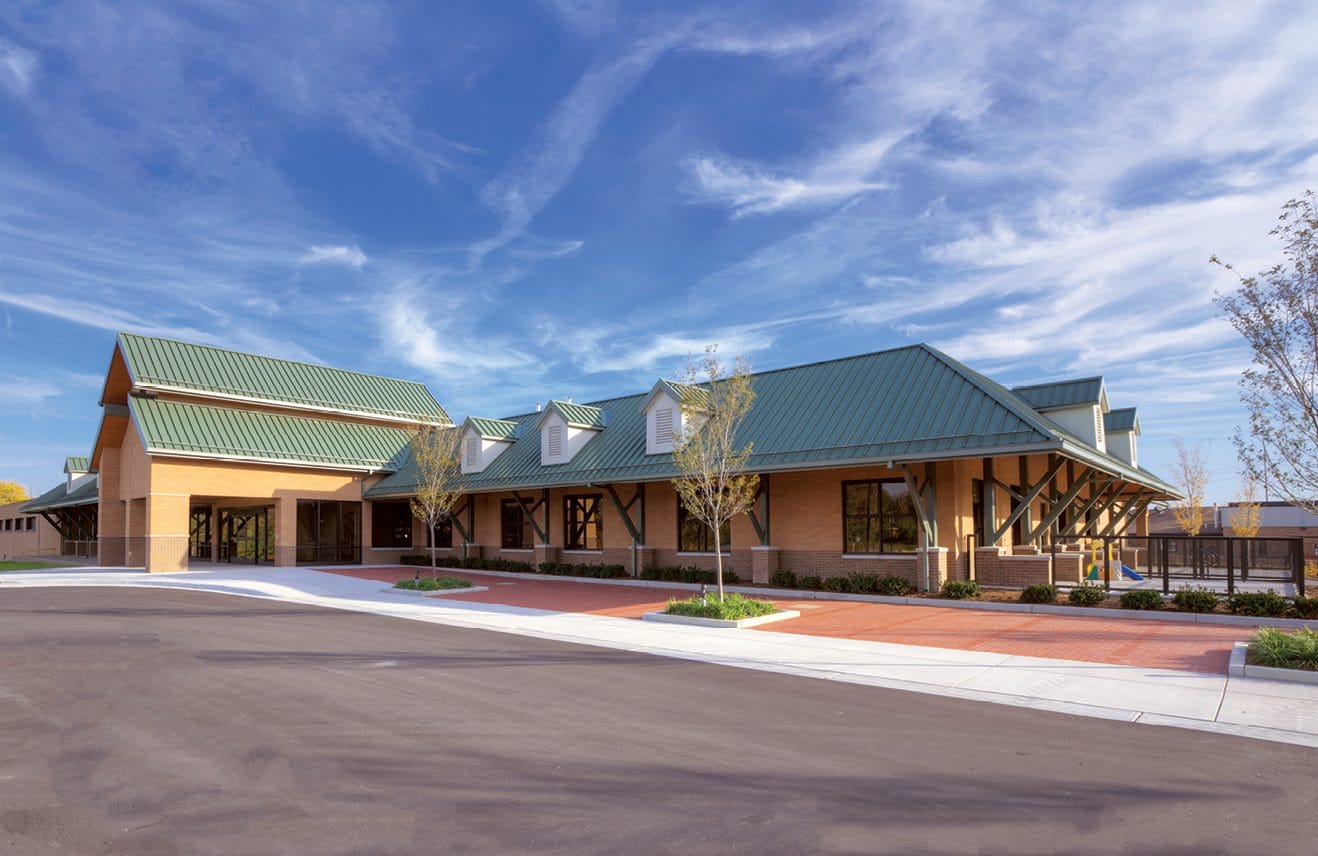By Emma Jo Haden, Breeding Stock Host
As a little girl, I was fascinated by a guide dog donation statue that sat in the front of the store where my Nanna worked. It had a real leather harness, and I would beg my mother for coins to put in the little coin slot. My parents would buy calendars and Christmas cards to support charitable fundraising, and as I grew, so did both my love for animals and my desire to make a difference in the world.
Many years later, living on the other side of the world with a family of my own, I saw a tiny advertisement in a local newspaper for host families for breeding stock dogs for Leader Dogs for the Blind. Within 24 hours I had emailed the contact point, filled out any paperwork I could find, and practically written a cover letter to Leader Dogs expressing why they should consider my family! Very soon after, we welcomed Harmony, a gorgeous sweetheart of a yellow Labrador retriever into our home. Hosting a breeding stock Mama for Leader Dogs has been so rewarding for our family, and although the benefits are countless, here are what we consider the five best things about hosting a Leader Dog Mom, in no particular order.
- Working with Leader Dog! Leader Dog has been a pleasure to work with in every way from day one. Every expectation involved in hosting was explained in detail, and a manual was provided that covered everything from the care of the breeding mom, to the whelping experience and detailed care of the puppies from birth to seven weeks. Supports are in place in the form of access to a mentor as well as a veterinarian on call. Every single interaction with Leader Dog has shown them to be helpful, encouraging and reassuring in every sense of the word.
- The breeding mom! Harmony was bred through the Leader Dog program with a wonderful pedigree and is a perfect specimen for breeding both physically and behaviorally. She spent a year training with a puppy raiser before she was selected for breeding. More than that though, Leader Dog matched her with our family to ensure a good fit, and we could not be more in love with her beautiful personality. We can’t imagine life without her!
- The puppies! From the experience of witnessing the miracle of birth, to watching the puppies grow, ever so quickly, from tiny little helpless beings to big, strong, playful and smart little puppy dogs, we have loved every second of every snuggle and puppy kiss and the joy of their little waggy tails as they welcome our appearance at any time of day or night. Seriously, what could be sweeter?
- The people! If you’re even reading this, it’s quite probable that you are a dog person. In hosting a Leader Dog Mom, we have met many amazing, kind and generous volunteers who host breeding moms and dads, puppy raise, fundraise and more. We are so thankful to be a part of this group of dog people, who don’t just love dogs, but also love touching lives through their work.
- The lives we touch! So far, Harmony has provided Leader Dog with 15 beautiful, healthy, smart little puppies. Each puppy will touch countless lives even as they grow and learn. When they return to Leader Dog for intensive training, if successful, they will be matched with a client, providing a person with visual impairment access to life-changing freedom and independence. Some puppies may be selected for breeding, or alternative careers such as sniffer dogs or therapy dogs. Harmony herself may work in therapy when her breeding days are over.
Who knew, all those years ago, that one little charity collection would influence my life so greatly. Being involved in hosting a Leader Dog mom has enriched my life and made it possible for my family and me to make a positive impact in the world. I am thankful every day for this amazing experience, and I look forward to many years of association with this wonderful organization, Leader Dogs for the Blind.

